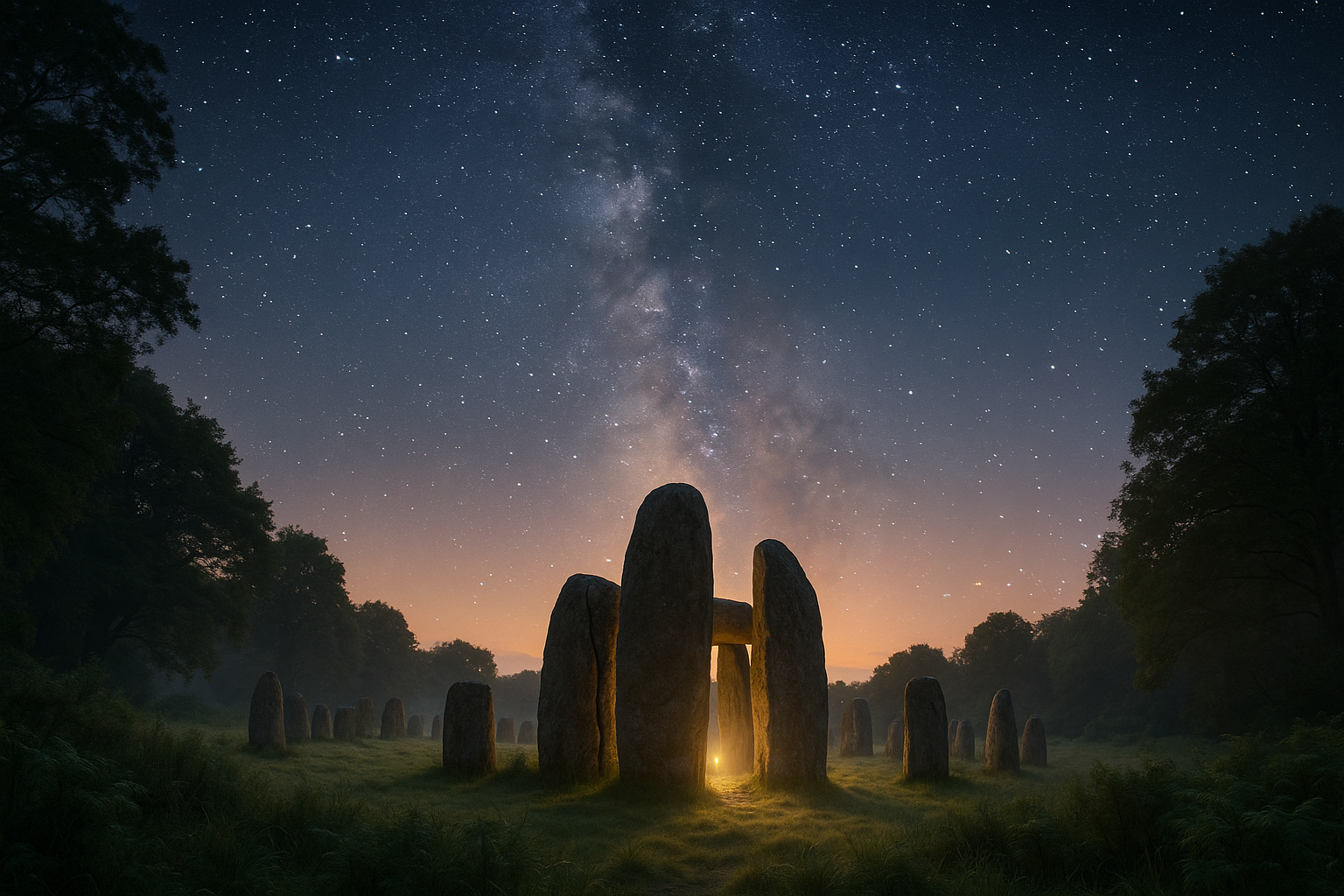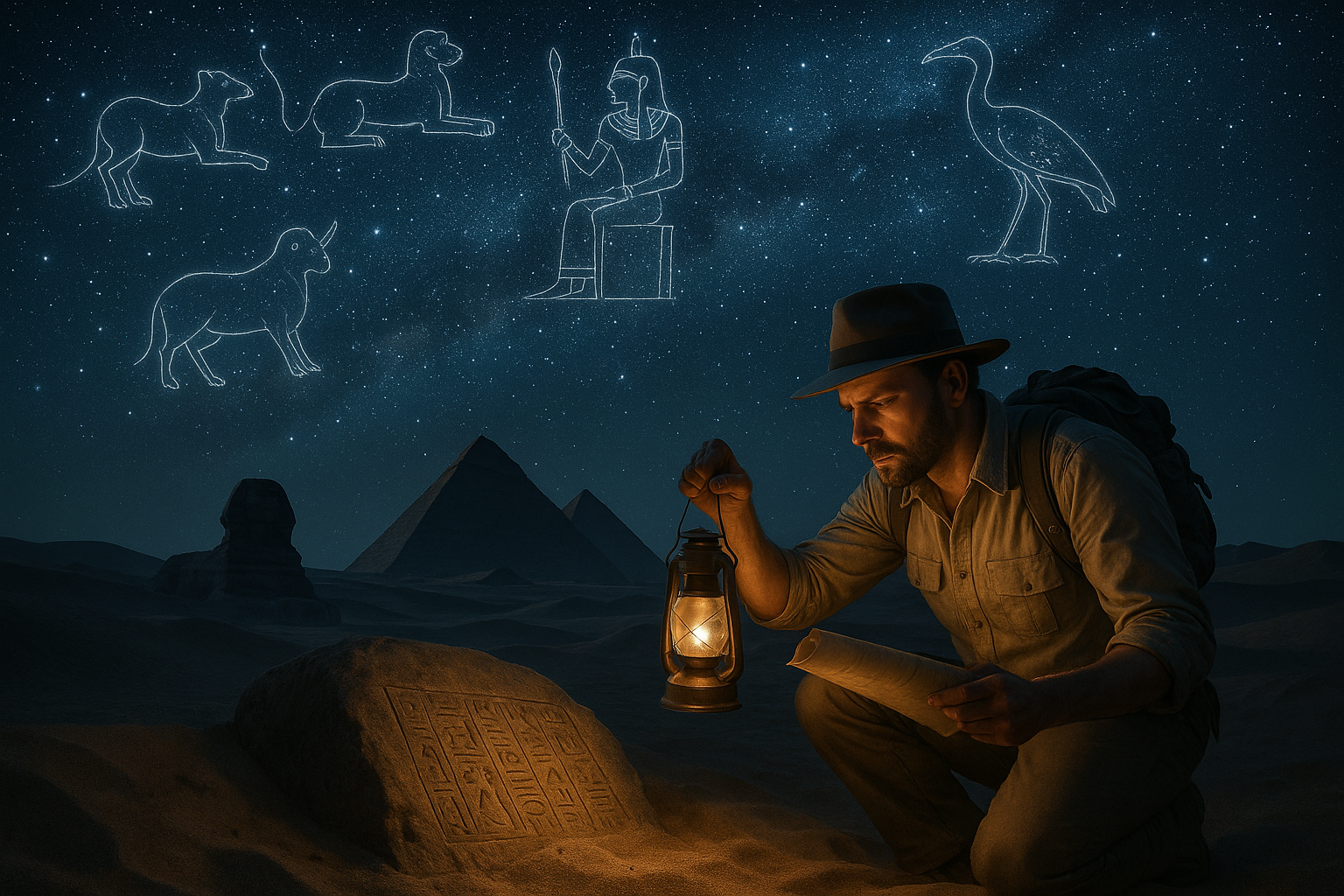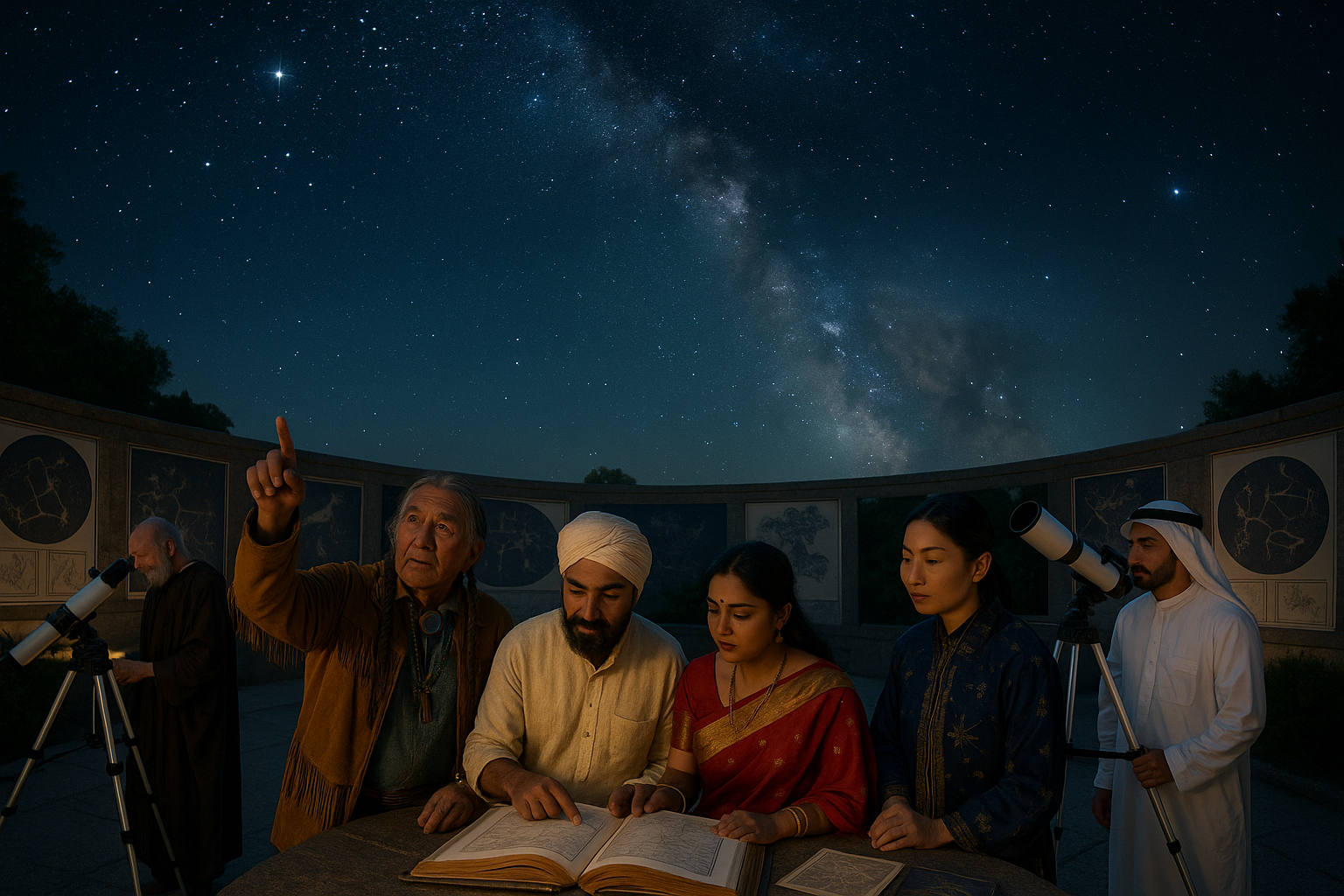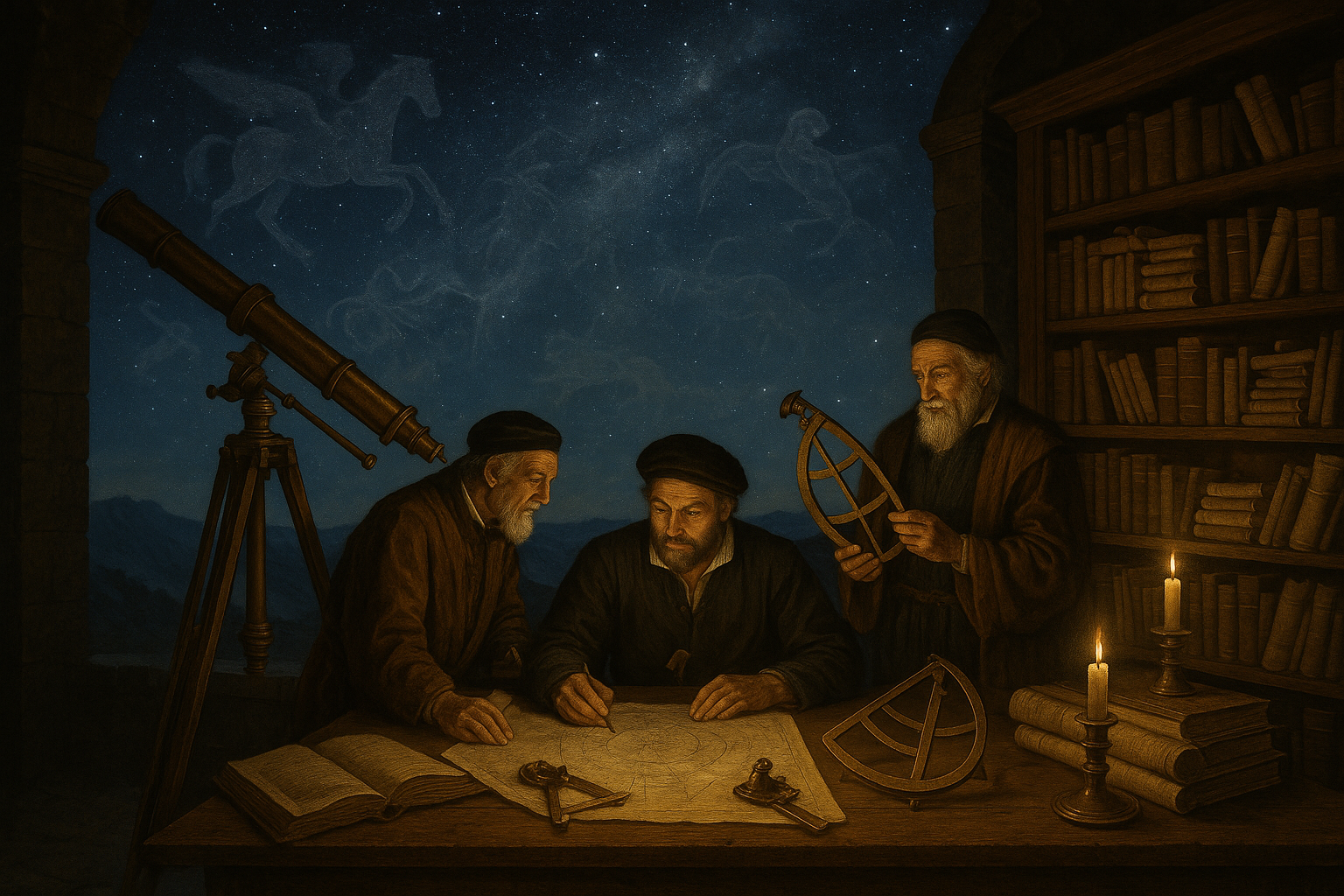In the hushed whispers of the ancients and the silent grandeur of age-old monuments, there lies a captivating secret—a celestial bond that transcends time and space. This article will take you on a mesmerizing journey through star-axis aligned sacred sites, revealing the profound connections between these mystical locations and the cosmic forces that have inspired awe for millennia. 🌌
Imagine standing before a monumental structure, its towering silhouette etched against a canvas of twinkling stars. These aren’t just remnants of bygone civilizations; they are carefully constructed marvels, meticulously aligned with the cosmos to harness energies and insights far beyond our modern comprehension. As we delve deeper, you’ll discover that these ancient architects were guided by more than just primitive tools and superstitions. They had an intricate understanding of astronomy and an unwavering belief in the power of spiritual alignment.
From the Great Pyramids of Giza, whose sides mirror Orion’s Belt, to Stonehenge, where each stone resonates with the solstices, these sacred sites are more than historical enigmas. They are gateways to understanding how our ancestors perceived their place in the universe. But what drove these ancient cultures to align their most sacred structures with the stars? Could it be a quest for divine connection, or perhaps a deeper understanding of the universe’s mysteries?
As you embark on this exploration, you will uncover how star-axis alignment served not just as a tool for celestial navigation but as a bridge between the earthly and the divine. These sites offer insights into the ancients’ spiritual practices, where cosmic harmony was seen as essential for personal and societal balance. In an era where digital screens dominate our lives, the ancients invite us to lift our gaze to the stars, urging us to rediscover the lost art of cosmic observation.
Throughout this article, we’ll explore the engineering genius and spiritual significance behind these structures. How did ancient builders achieve such precision without modern technology? What rituals and ceremonies were performed under the starlit skies, and how did these contribute to the spiritual well-being of the communities?
Moreover, we’ll delve into the symbolism embedded in these sacred sites. The alignment of certain temples and pyramids with celestial bodies wasn’t merely for show; it represented a profound belief in the cyclical nature of life and the universe. These sites were designed to capture solar and lunar events, marking time in ways that were vital for agricultural cycles and spiritual festivals.
We’ll also examine contemporary interpretations and how modern spiritual seekers are drawn to these ancient sites in search of enlightenment and connection. What is it about these places that continue to inspire and attract people worldwide? Is it the allure of standing where history meets the heavens, or is there a deeper, almost tangible energy that one can feel?
By the end of our journey, you’ll gain a comprehensive understanding of how star-axis aligned sacred sites serve as timeless testaments to humanity’s enduring quest for cosmic connection and spiritual alignment. You’ll be inspired to look at the night sky with newfound wonder and appreciation, recognizing that our ancestors, too, gazed at the same stars, seeking meaning and inspiration. 🌠
So, prepare to unravel the ancient secrets that bind us to the cosmos and discover how these celestial alignments continue to echo through time, inviting each of us to ponder our place in the universe. As we unveil these mysteries, may you find your own path to spiritual alignment, guided by the stars and the wisdom of those who came before us.

Conclusion
## Conclusion
The deliberate alignment of sacred sites with celestial bodies reveals a sophisticated understanding of astronomy that transcends cultural boundaries and geographical distances. From the pyramids of Giza to the medicine wheels of North America, from Angkor Wat to the stone circles of Britain, ancient civilizations invested tremendous resources and knowledge into creating structures that connected the earthly realm with the heavens above. These alignments weren’t merely decorative or coincidental—they served as calendars, temples, and bridges between the physical and spiritual worlds. The precision with which our ancestors tracked stellar movements and incorporated them into their most important monuments demonstrates a level of dedication and mathematical skill that continues to astound modern researchers.
What makes these star-axis aligned sites even more remarkable is their enduring impact on how we understand ancient cultures and their worldviews. These structures tell us that ancient peoples saw themselves as part of a cosmic order, where the movements of stars and planets held profound significance for daily life, agricultural cycles, and spiritual practice. The knowledge required to construct these sites was carefully preserved and passed down through generations, suggesting organized systems of education and religious hierarchy that were far more complex than early scholars initially believed.
As we continue to study and discover new alignments at archaeological sites around the world, we’re reminded that looking up at the night sky is one of humanity’s oldest and most universal experiences. These sacred sites stand as testament to our enduring fascination with the cosmos and our desire to find meaning in the patterns above us. They challenge us to reconsider what we think we know about ancient capabilities and inspire us to preserve these incredible monuments for future generations who will undoubtedly uncover even more secrets hidden in their celestial orientations.
Toni Santos is a visual researcher and symbolic astronomer specializing in the study of archaic celestial systems, sacred star observation practices, and the visual languages embedded in ancient astral lore. Through an interdisciplinary and sensory-focused lens, Toni investigates how humanity has encoded knowledge, prophecy, and mystery into the astronomical world — across cultures, myths, and forgotten observatories. His work is grounded in a fascination with stars not only as celestial bodies, but as carriers of hidden meaning. From extinct star cult rituals to mythical constellations and secret astronomical codes, Toni uncovers the visual and symbolic tools through which cultures preserved their relationship with the celestial unknown. With a background in design semiotics and astral cartography history, Toni blends visual analysis with archival research to reveal how stars were used to shape identity, transmit memory, and encode sacred knowledge. As the creative mind behind disxan, Toni curates illustrated star maps, speculative constellation studies, and symbolic interpretations that revive the deep cultural ties between cosmos, celestial folklore, and forgotten astronomy. His work is a tribute to: The lost celestial wisdom of Archaic Astronomical Knowledge and Symbolism The guarded rituals of Obscure Rituals of Star Cults The mythopoetic presence of Celestial Myths and Forgotten Constellations The layered visual language of Star Temples and Forgotten Astral Shrines Whether you're a celestial historian, symbolic researcher, or curious seeker of forgotten astral wisdom, Toni invites you to explore the hidden origins of star knowledge — one constellation, one glyph, one secret at a time.




